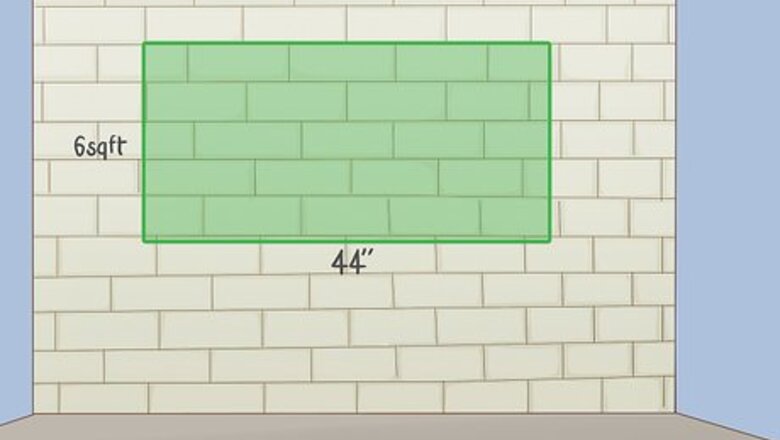
views
Planning the Window
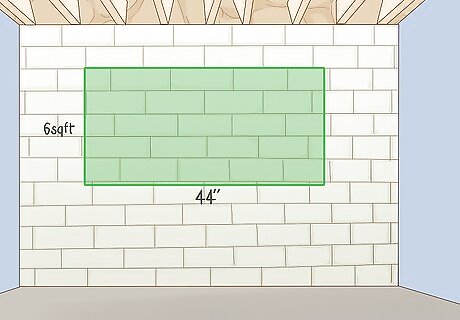
Determine how large your egress window needs to be. Requirements vary based on where you live, so look up local codes on the subject. It will likely need to be about 6 sq ft (0.56 m) big, and the bottom of the window opening will need to be no more than 44 in (110 cm) off the floor. Not all basement rooms legally need an egress window. However, basement bedrooms are not allowed without one. Check if you need any building permits to get started as well, and follow the procedures to get them. At the very least, you will probably need to get inspection and clearance from the local utility companies to start digging so that you don’t damage any buried utility lines.
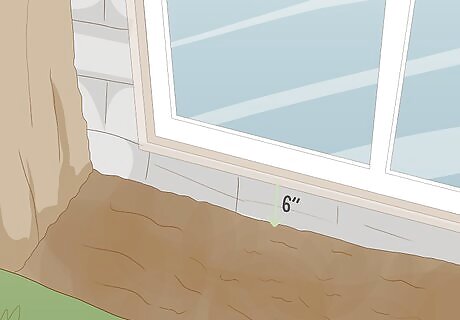
Dig an oversized window well outside where you will add the window. It needs to be at least 36 in (91 cm) wide and extend 36 in (91 cm) out from where the window will go. It will also need to be no more than 44 in (110 cm) deep. Warning Make sure there are no buried utilities, such as electrical wires or pipes, before you start digging. You may need to get clearance from the city utility companies before starting the work. Dig the hole about 6 in (15 cm) deeper than where the bottom of the window will be, or as close as you can get without going past 44 in (110 cm) deep. This will allow for a window ledge. If you have a deep basement that forces you to dig the window well deeper than 44 in (110 cm), then most codes will still allow you to install the window as long as you put some sort of ladder or steps in the window well to provide access.

Measure and mark your cut on the inside wall of your basement. Use a measuring tape to measure the outline of the window according to the dimensions you determined. Mark each side with a grease pencil and a straight edge. Make sure you leave about 6 in (15 cm) of header space between the top of the window and the floor joists if you are placing it perpendicular to the joists. This way the floor joist still have part of the wall to rest on. If you don’t have a grease pencil, you can use masking tape as an alternative to mark the outline of the window.

Drill a pilot hole in the center of the bottom cutting line. Use a drill bit for concrete that is long enough to go through the wall. Make sure the drill is perfectly level when it penetrates the wall. You will use the pilot hole as a reference point on the outside to mark the window. This is why you need to drill completely level.
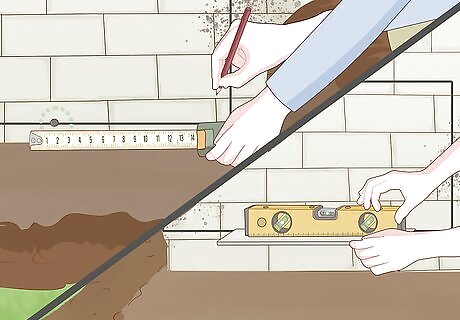
Measure and mark the cut on the outside. Use the pilot hole as a reference point to measure the bottom line of the window first and mark it with your grease pencil. Measure and mark the sides and the top of the window. Use a level and a straightedge to check your markings and make sure they are completely level.
Cutting the Hole
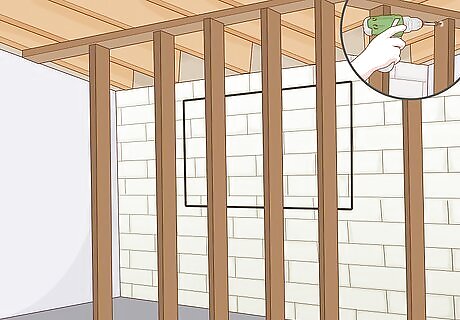
Build a support frame if the window will be perpendicular to the floor joists. Construct a temporary support frame out of 2-by-4s about 3 ft (0.91 m) back from the basement wall. Align the studs directly underneath the joists and screw the top plate to the joists. The frame will need to be at least as wide as the window, so that you will have 1 stud of the frame under each joist that runs above the window. Make it wider if you have the room so that there is added support.
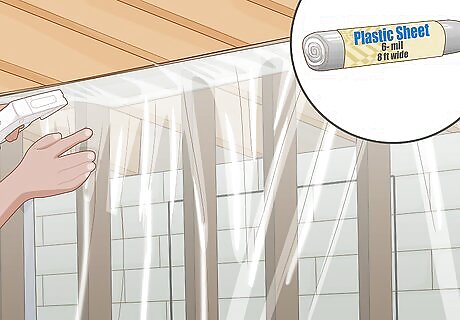
Hang plastic sheeting along the frame to contain dust. Use 6-mil plastic sheeting to confine dust within the area you will be cutting. Use a staple gun to secure it along the temporary frame and to the joists in the ceiling. Use a plastic sheet that is at least 8–9 ft (2.4–2.7 m) feet wide to tent a large enough area and keep all the dust confined there. Make slits in the sheeting so you can staple it between the joists and create an extra-tight seal.
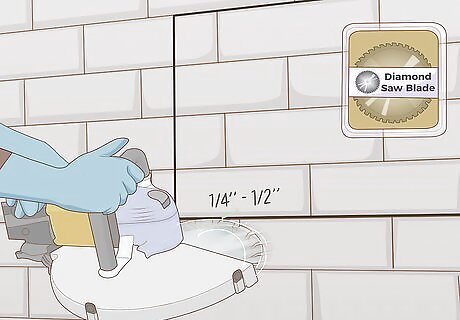
Cut a groove around the inside perimeter of the window with a concrete saw. Use a 14 in (36 cm) concrete saw with a diamond blade. Make a first pass around the perimeter and only cut about ⁄4–⁄2 in (0.64–1.27 cm) deep to create a straight groove that will guide your next, deeper cuts. Warning If your wall is solid concrete, it is recommended that you hire a professional to make the cuts for you. Doing it yourself is best saved for walls made of concrete blocks. You can rent a concrete saw. Renting a diamond blade is also recommended. Wear hearing and eye protection, a dust mask, and gloves when operating the saw.
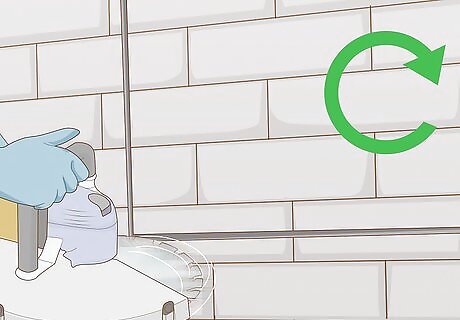
Cut halfway through the wall along the groove you created. Make another pass around the perimeter of the window, cutting deeper, until you get approximately halfway through the wall all the way around the window. The groove you made will guide your cut so you can focus on applying pressure to cut deeper. Don’t worry about whether the cut is exactly halfway through the wall. You will be completing the cut from the other side.
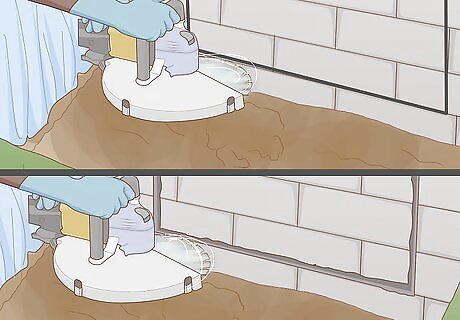
Cut through the other side of the wall in the same manner. Cut a straight groove around the outside of the window first. Make a second, deeper pass along the groove until you meet your cut from the inside. You can cover the area outside with a tarp where you will be cutting if you want to keep it clean.
Putting in the Window
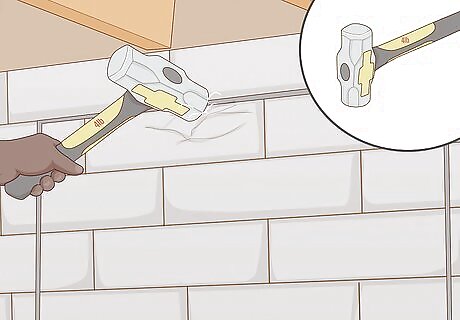
Knock out the blocks where the hole will be with a 4 lb (1.8 kg) hammer. Start at the top-center and work carefully around the edges. Be careful not to loosen the blocks that will remain in place. If there are any blocks that are hard to knock out, start by breaking out the core of the block and then break away the rest.
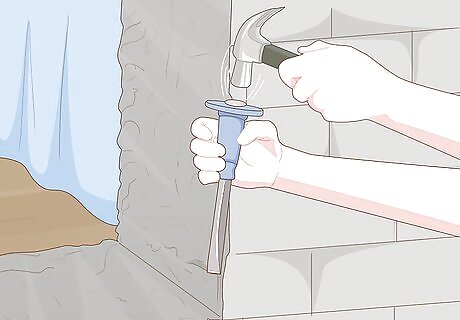
Chip the sides of the hole with a brick chisel to smooth them. Tap a brick chisel along the edges with a hammer. Check that the opening is big enough to fit the window frame and window. The edges don’t need to be perfectly smooth. They just need to be smooth enough to comfortably fit the window.
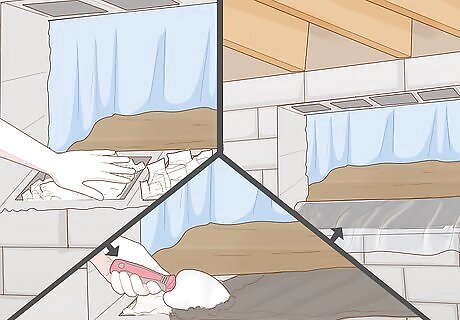
Fill the cores of the bottom blocks with concrete. Stuff newspaper into the blocks first to keep the concrete from falling down into them. Fill the the blocks with concrete, on top of the newspaper, and smooth out the top of the concrete with a trowel. Cover the concrete with plastic to create a moisture barrier. If you don’t stuff newspapers into the blocks, you will end up using a lot more concrete than is necessary to fill up the blocks.

Put the window frame into place and secure it with nails or screws. Partially drive 3 in (7.6 cm) deck screws into the bottom of the frame and push them into the wet concrete below. Screw the top of the frame into the ceiling plate or joists. Use concrete screws to anchor the sides of the frame to the concrete walls. Tip: You can build a frame to fit yourself with pressure treated lumber, or get one premade. Making one yourself will ensure a tighter fit. Drive the concrete screws into the mortar joints of the wall (where the blocks meet) to avoid shattering the blocks.
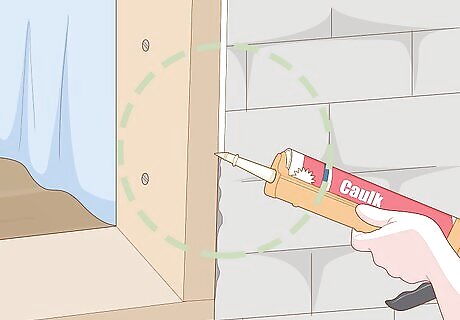
Apply an exterior caulk around the frame and walls to seal them. Use polyurethane or another type of exterior caulk to create a waterproof seal. Squeeze a bead of it in between the window frame and the concrete walls to seal the crack and prevent water from getting in. If there are any gaps wider than ⁄4 in (0.64 cm), then put a foam backer rod in between before you apply the caulk.
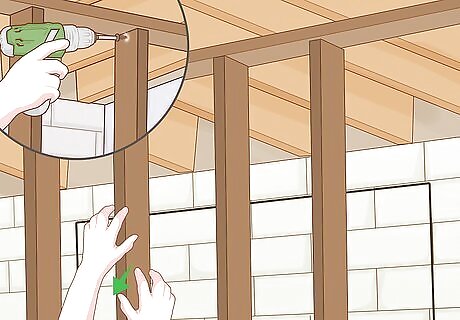
Remove the temporary support frame. It is now safe to deconstruct the temporary support frame you built. The window frame you just installed will support the joists. It’s easiest to start by unscrewing the frame from the joists. Then you can lay the frame down and deconstruct the rest of it.
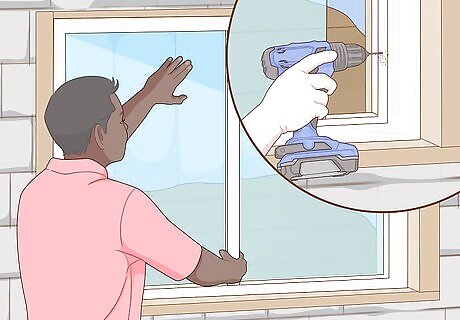
Lift the window into the frame and secure it according to the instructions. Your window will come with installation instructions specific to the window. You will most likely need to screw or nail the metal fins of your window into the frame and caulk around the edges of the window to seal and waterproof it. The installation procedure varies depending on the type of window you purchased. Make sure to refer to the manufacturer’s instructions for the exact procedure. For instance, some manufacturers specify that the window must be nailed, not screwed, into place.
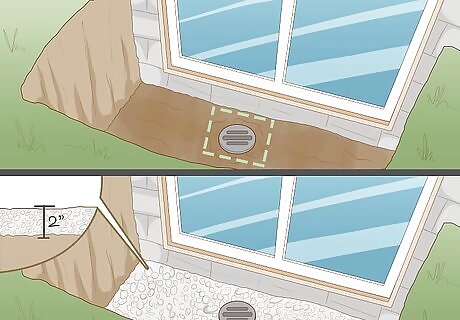
Install a drain pipe in the window well and partially fill the well with gravel. Excavate a hole in the bottom of the window well to install a PVC pipe that connects to the exterior drainage system of your home. Cover the base of the window well with about 2 in (5.1 cm) of gravel to facilitate drainage. If your window well happens to be on a slope, then you can just dig a hole for the pipe that leads the water downhill away from the egress window, rather than connecting it to the exterior drainage system of your home.




















Comments
0 comment